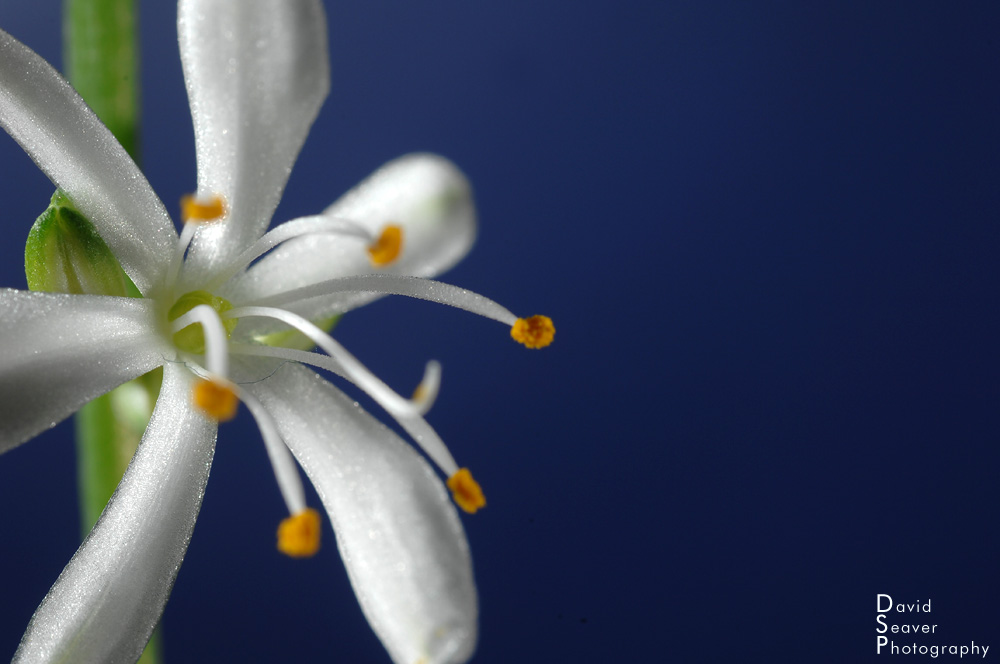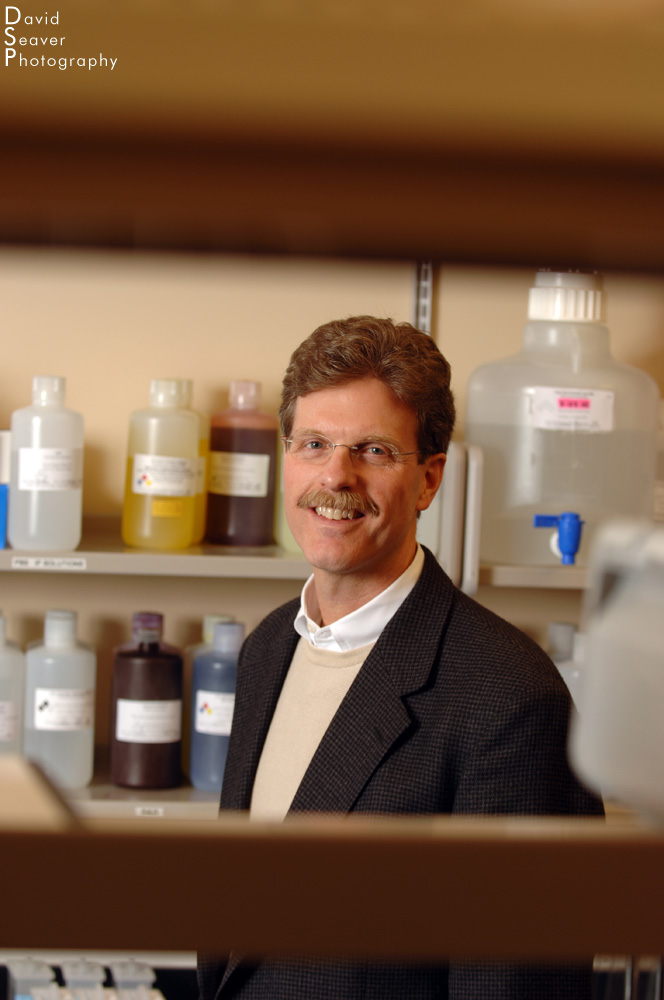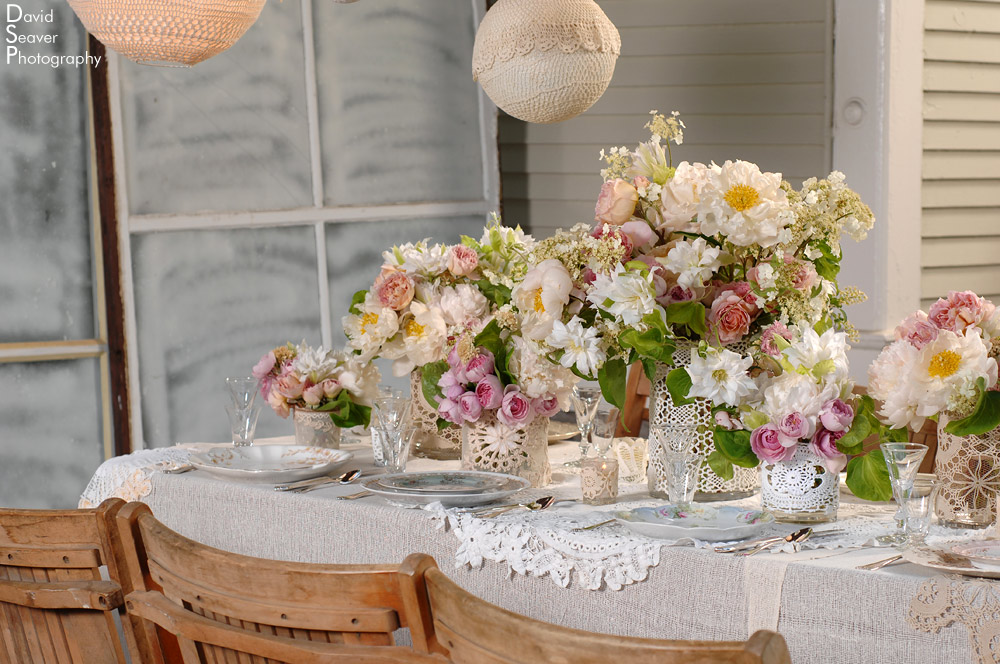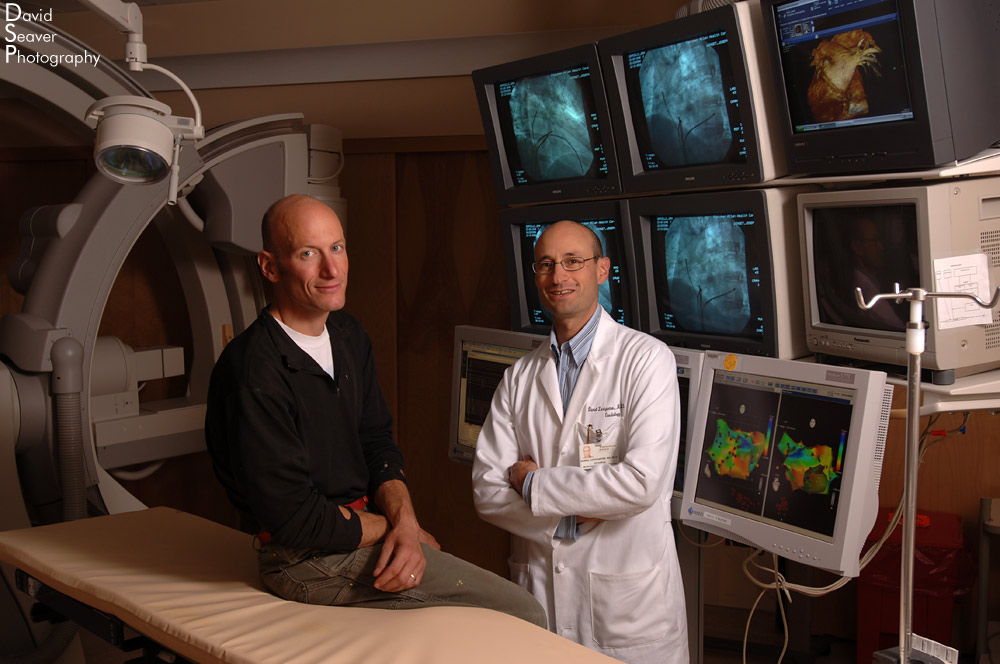Controlled and Studio Lighting
When you can control the lighting, you can control exactly how a photo will look and make minor adjustments all in the comfort of your studio, or wherever you’re shooting. While studio lighting is an endless experiment with endless variations, I’m going talk generally about the thought process.
Coming into a space that you will fully light, you have to think in terms of key lighting (main lights), background lighting, and highlights. You can control lighting with one light or a hundred. Each light adds a layer that you need to think about it’s direction, intensity, and shape (you can add color as well).
I won’t get too specific with which types of lights you can use. I use a mix of small flashes and large studio flashes depending on the location, subject, and how much I can carry to a shoot.
Let’s start with a simple one light studio setup.

Nikon D2X, 6omm, f20, 1 Nikon SB-800 no diffusion
This spider plant hangs over my desk and during a tremendous growth spurt last year was flowering like crazy. I taped some blue paper on the wall behind it, grabbed my SB-800 flash, tethered with a TTL cord, camera right and blasted away. It was challenging to get the light to only hit the flower and not the background. I ended up zooming the flash head to it’s max, 105mm. I had to shoot at f20 to get even a little bit of depth because the flower was so small and I was right up on it with my 60mm macro.
The whole thing about lighting is to make it look ‘real’ or believable, which generally means getting the flash off the camera to add depth and definition to the subject.

Nikon D2x, 70-200mm, f3.5, Excalibur 1600 with white umbrella
Although not in a studio, I had to take control of the lighting in this florescent lit basement laboratory. Nobody wants a dark green cast over your photos from the standard florescent tubes in most buildings these days. I set up an Excalibur 1600 Studio Flash with a large white umbrella to camera left, triggered by a radio slave. Shooting at 100/sec was enough to overpower the ambient light of the lab, eliminating the green glow, and giving me just enough light that I could still go as open as f3.5 to keep a reduced depth of field. I was trying to get something in the foreground and we had tried a number setups with various lab equipment, but here I’m shooting through a shelf that separated the room. I had to stand on a stool to get up high enough to shoot through the hole in the shelf. The flash is on the same side as the subject as I didn’t want much light on my side to keep the focus of the Dr.
Now to add more lights. The more lights you add, the more complicated a shoot becomes. When I’m doing quick portraits, I like to keep it simple and use 1-3 lights, usually just one, off camera. However, some subjects call for more than one. 
Nikon D2x, 6omm, f5.6, three studio lights
This was shot for an article in Vermont Vows Magazine, the premier wedding mag here in Vermont. The setup was outside, but under a roof, but I wasn’t really looking for any ambient light, so I set up three studio lights, one on camera left with a large umbrella. From this angle it would be my ‘key’ light. I had two more lights, one on camera right with a softbox on it. That was creating the highlights on top of the flowers. The other was straight across from the first light, again with an umbrella, this time to light the back wall and fill in some shadows.

Nikon D2X, 17-35mm, f5.6, Excalibur 3200 Studio light
This shot was made with only one light, a studio light, camera right with an umbrella on it. While this section is about total light control in a studio sense, the only other light source was the monitors which I had to include in the photo, which meant that this image was made at 1/15 sec. While that’s pretty slow, it was dark enough that the flash would freeze any minor movement. On a side not about shooting at slow speeds, I find it’s all about controlling your breathing and steadying your body. If that fails, take as many photos as you can, one will end up sharp. I had brought and set up a few other lights, but once I got going, I realized that if I wanted a more dramatic shot of the doctor and patient, I should par it down to one light, not to mention the comparatively dim monitors that were being totally blown away by the flash. By moving the flash off to camera right, I could avoid getting reflections on the monitors, while lighting both subjects and giving the background just enough to tell that it was in a hospital.

Nikon D2x, 70-200mm, f3.2, Excalibur Studio Light
Here’s a simple one light set up, a large umbrella, 45 degrees camera left provides all the light you’ll need. Enough to pop the main subject, and giving just enough to light the background. You could also do this with two lights, one for the subject, one for the background, but this is the simplest way. With only one light you can keep those deep shadows on the non-lit side, giving enough light at the right angle to show real depth. I was also using a long lens to compress the depth of field and to blur out the background a bit.
To see more of my work or to contact me about a project or assignment, please visit my website, www.photovt.com.


Leave a Reply
You must be logged in to post a comment.